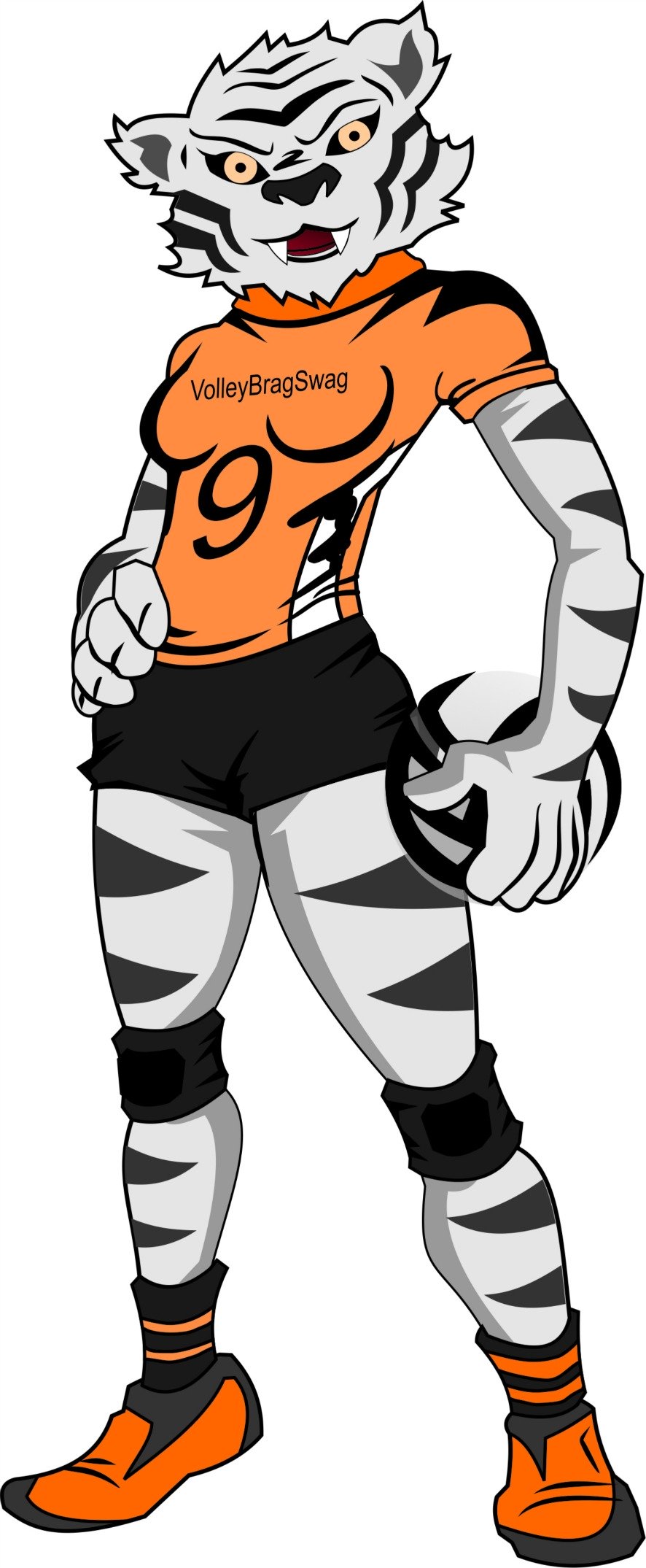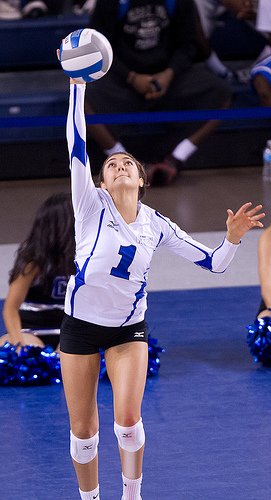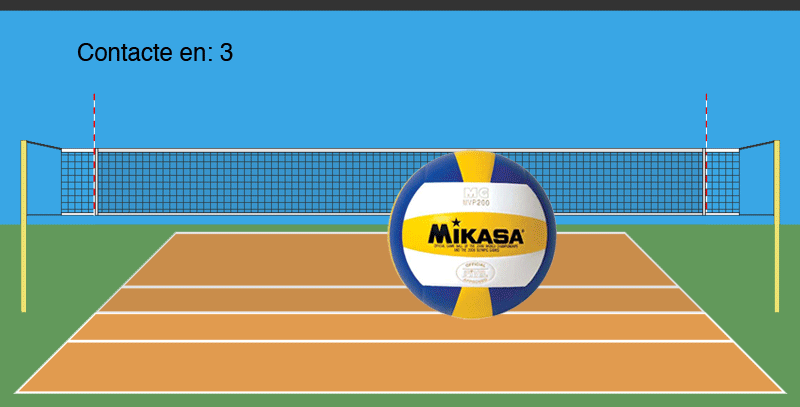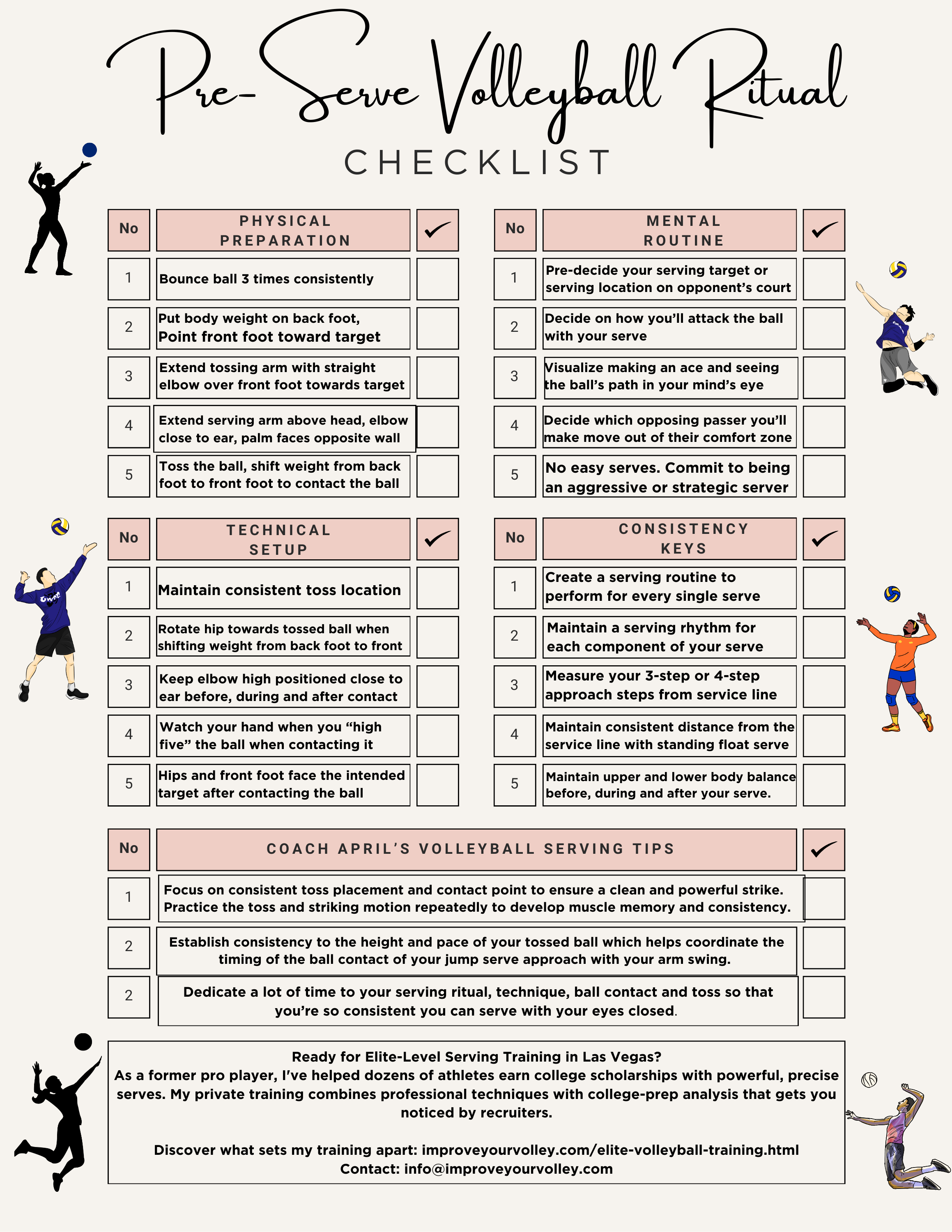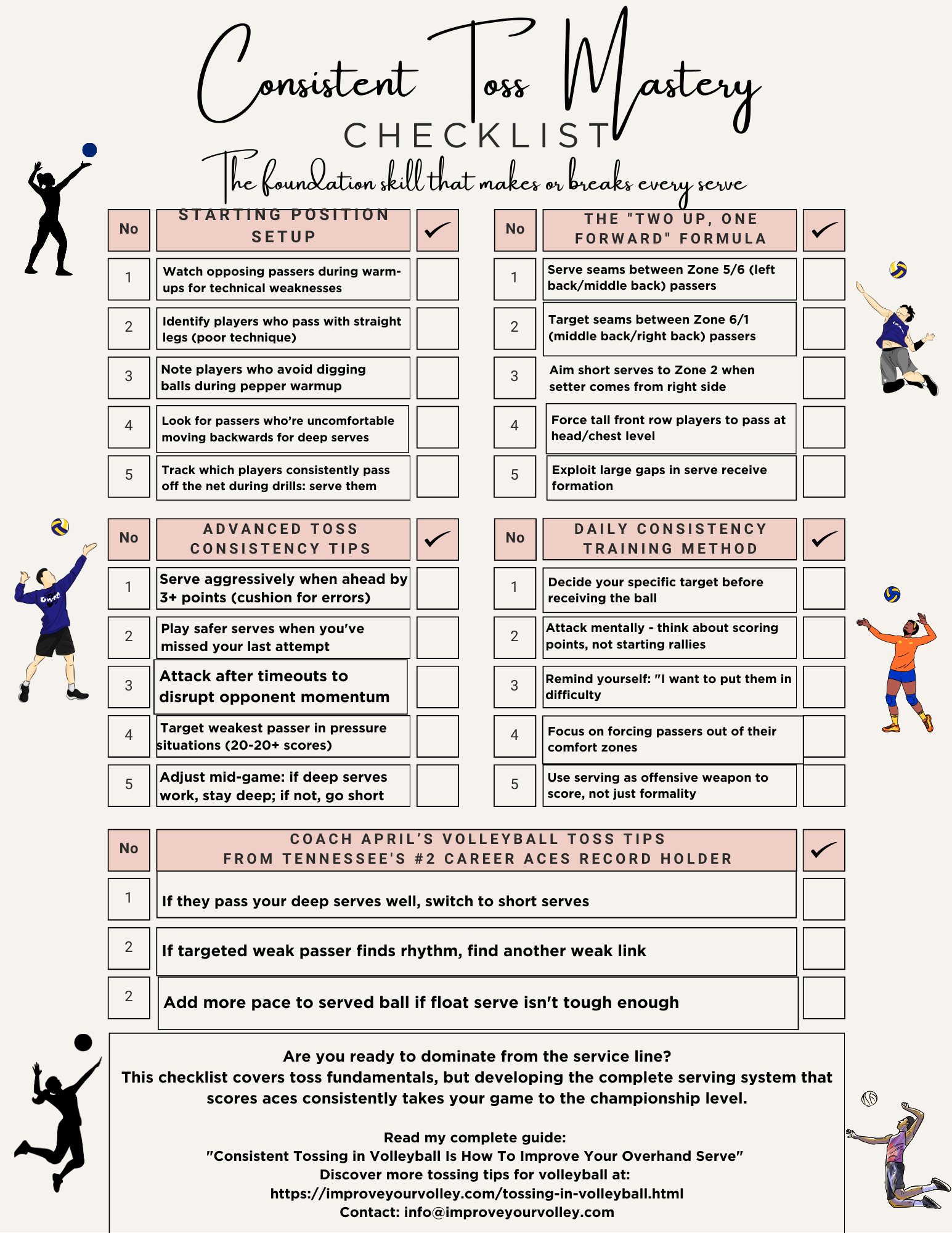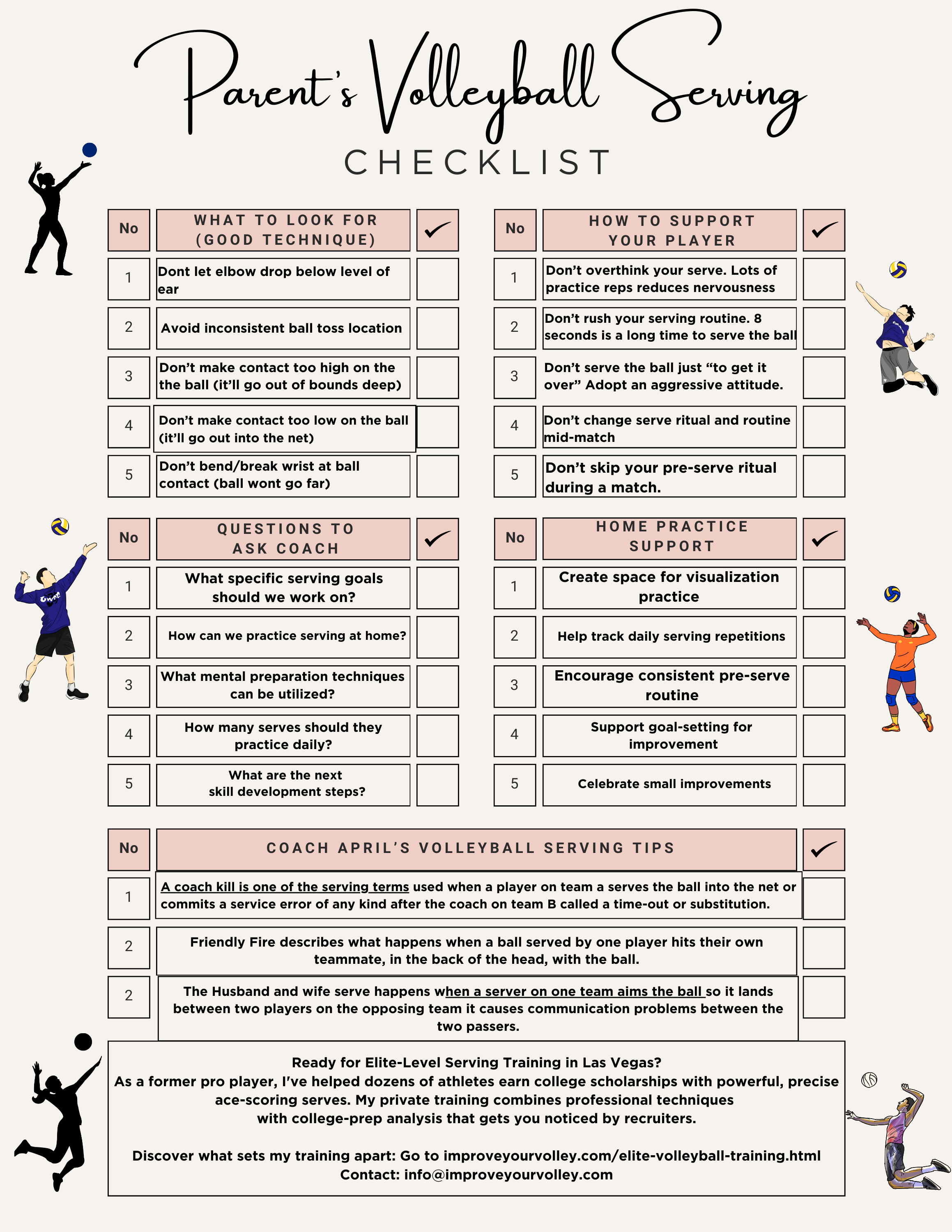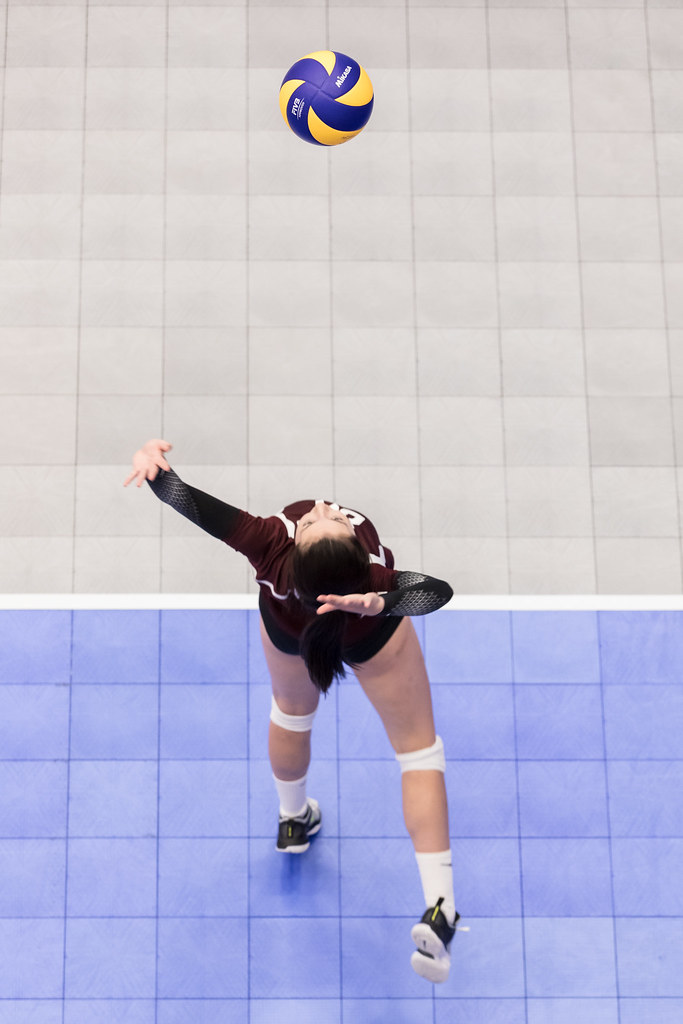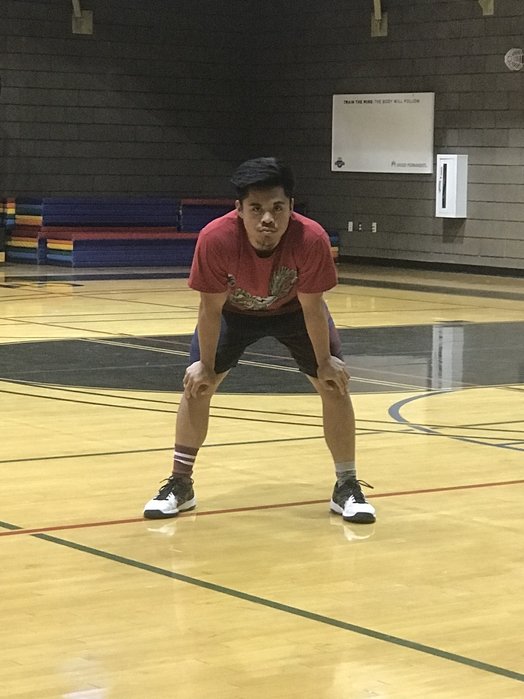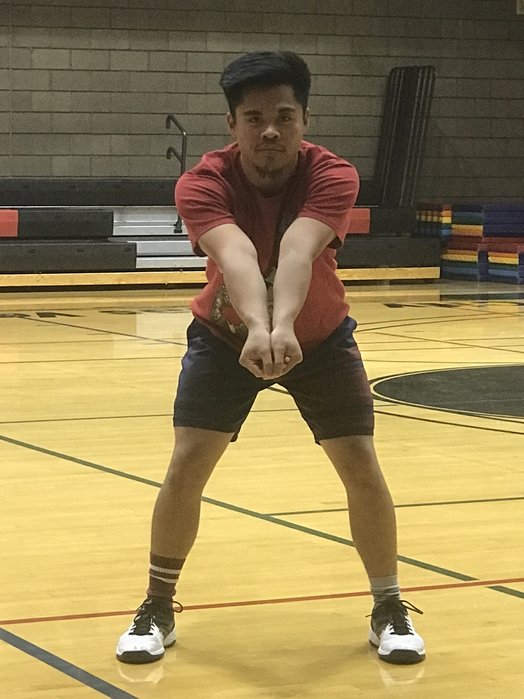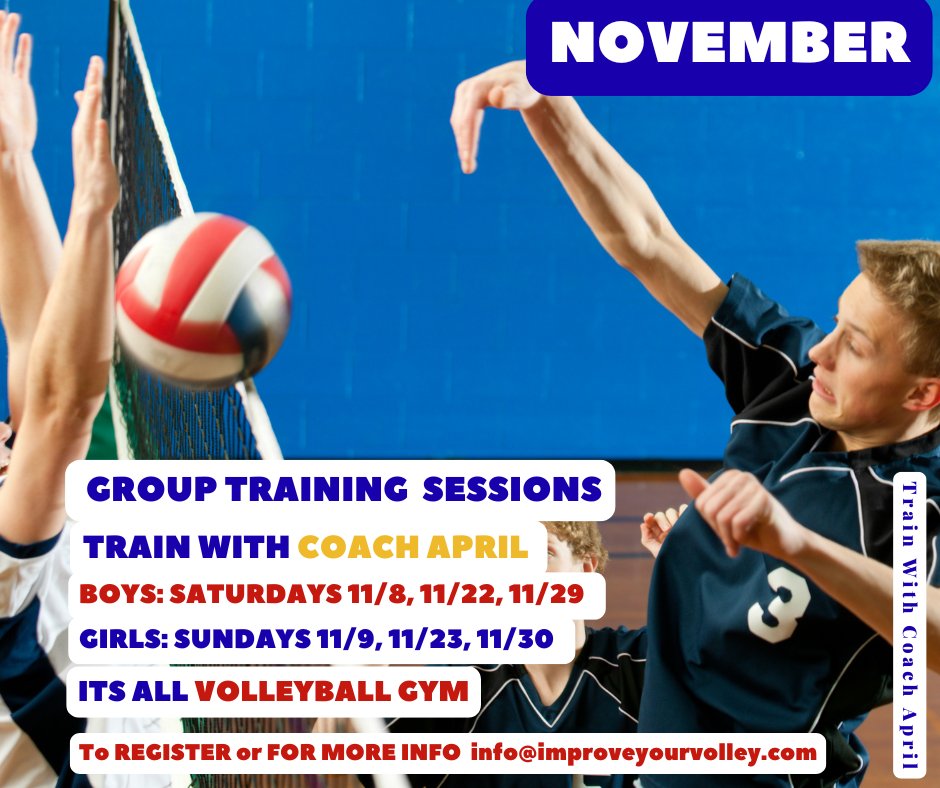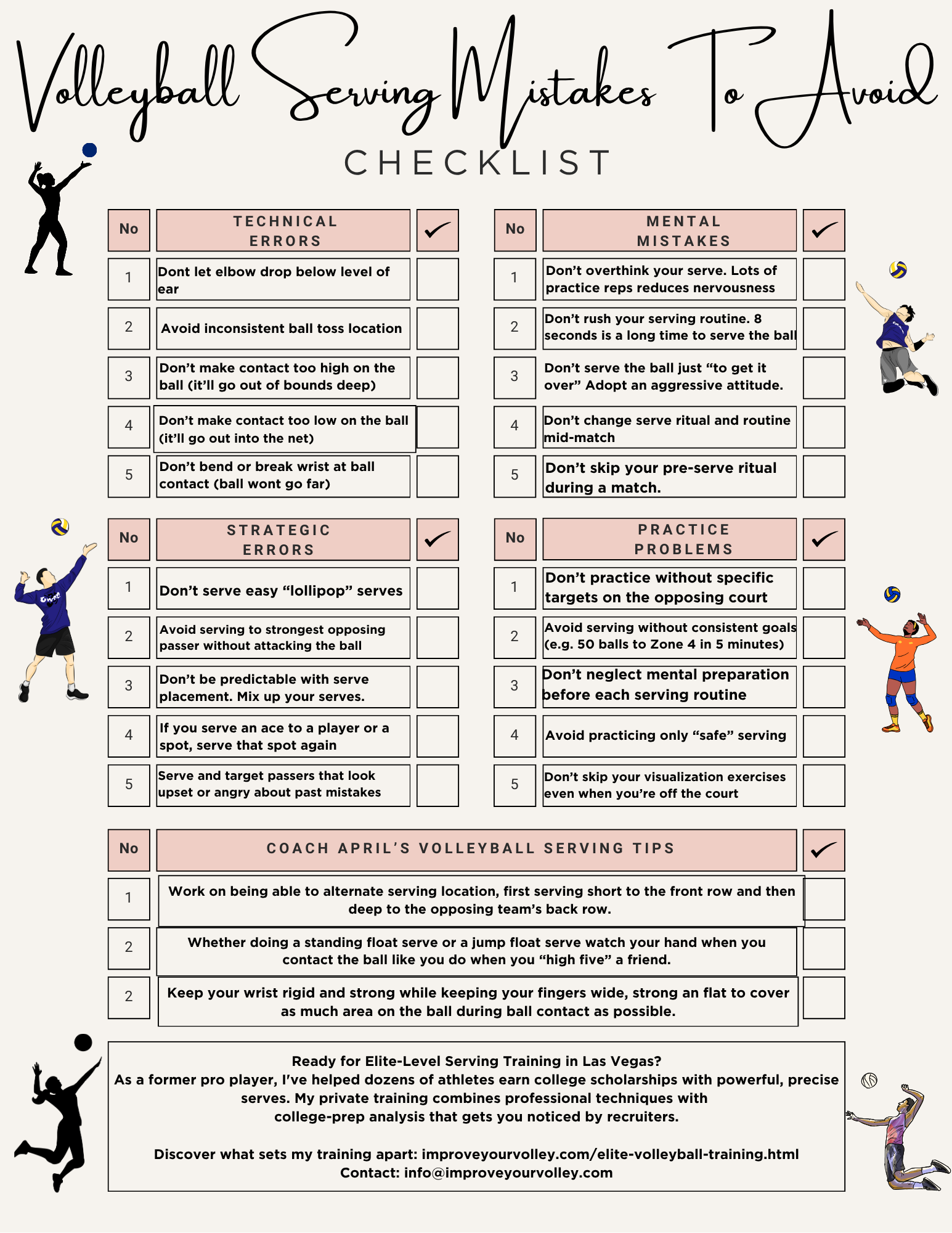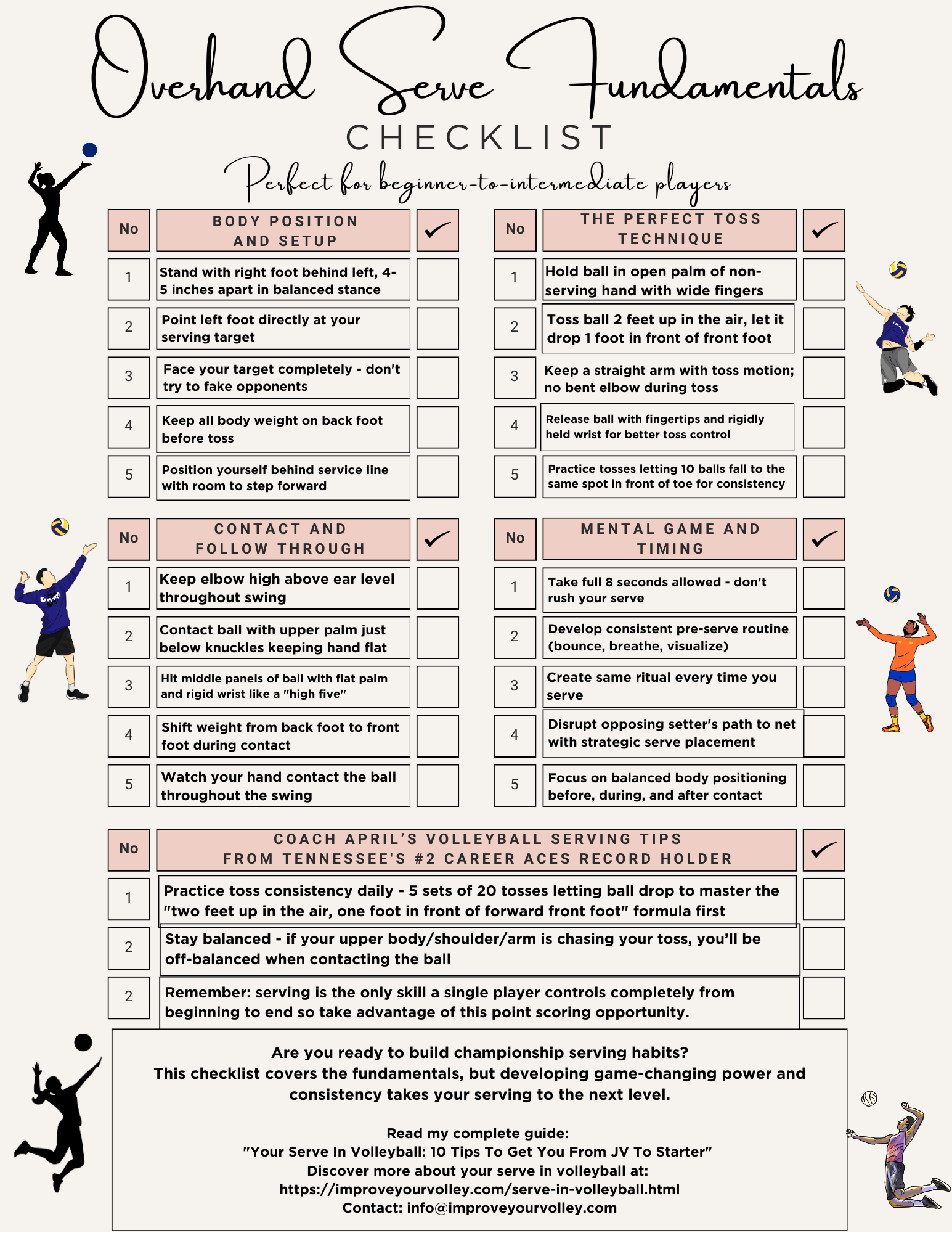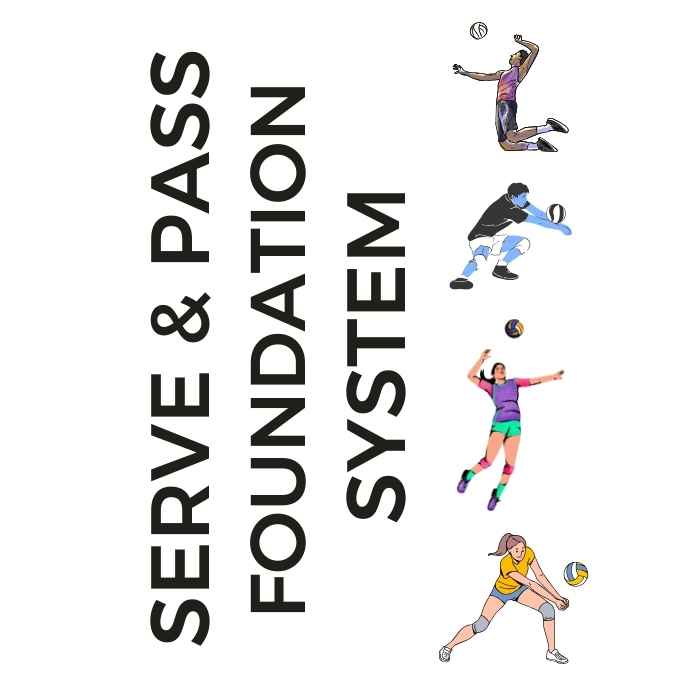
Serve + Pass Foundation System: The Complete Skills Arsenal The two-skill mastery system that transforms inconsistent players into the athletes coaches build their lineups around. Stop Struggling With The Two Most Important Skills In Volleyball!
- Improve Your Volleyball with Coach April
- Volleyball Plays
- Float Serve Volleyball
10 Frequently Asked Questions About The Float Serve Volleyball Technique
I answer ten of the most frequently asked questions that I get about standing and jump float serve volleyball skill, technique and strategy used to score aces
Welcome to my informative guide on the float serve volleyball technique!
The float serve technique is a distinctive serving skill used to confuse opposing team passers and help you score aces.
In this article, I provide a clear definition of the float serve volleyball skill.
So, let's get into it and unravel the secrets of this powerful serving technique.
What's the Float Serve Volleyball Definition?
Addi works on her jump float serve toss consistency while aiming for a deep line serve to Zone 5.
The float serve in volleyball is a type of overhand serve done by contacting the ball using the top part of the palm of your hand to make contact with the middle panels of the ball while keeping a rigid wrist upon contact in order to avoid generating spin on the ball.
Unlike a traditional spin serve, the float serve relies on the fluid motion of the server's hand and the ball's aerodynamics to create unpredictable movement in the air after contact while moving from one half court to the other.
The unique characteristic of the float serve lies in its ability to keep the passers guessing while challenging the opposing team, often resulting in shanks and mispassed balls and aces scored and creates valuable opportunities for the serving team to gain an advantage in the rally.
High school varsity volleyball player Brooklyn performs the jump float serve during semi private training lessons.
Ready to take your serving to the next level?
I help college-prep athletes who want to perfect their float serve signature... elevate to next-level consistency without losing their natural rhythm through elite training that makes your float serve a reliably consistent point-producer.
My private training sessions are specifically designed for college-bound athletes who refuse to settle for "good enough" serving.
Limited spots available for serious players only.
Q: What is a float serve in volleyball?
A: The float serve volleyball skill is a type of overhand volleyball serve performed by contacting the ball with a flat hand in the middle panels of the ball.
This makes it difficult for the receiving team to read and anticipate where its going to land in their court.
What is the ideal body positioning for a jump float serve?
Remember, staying balanced in the air and when you land is the key.
Start by positioning your feet shoulder-width apart with the foot of your non-dominant leg slightly forward and your bodyweight on your back foot.
Be ready to start your serve with a slow step that gets your body moving with forward momentum, before you toss and spring into the air after taking the last two steps of your approach.
While in the air, keep your body tall and balanced while bringing your serving hand with a flat wrist to contact the middle of the ball with the middle of the palm of your hand.
Katelyn with the Tough Jump Float Serve
Ready to take your serving to the next level?
I help college-prep athletes who want to perfect their float serve signature elevate to next-level consistency without losing their natural rhythm through elite training that makes your float serve a reliable point-producer.
My private training sessions are specifically designed for college-bound athletes who refuse to settle for "good enough" serving.
Limited spots available for serious players only.
Click to Download Your Pre Serving Ritual Mastery Checklist pdf:
🎯Volleyball Pre Serving Ritual Guide - $7
Transform Your Serve from Weak to Weapon
Stop letting pressure situations destroy your serves?
You'll Get
- ✓3-bounce physical preparation setup system
- ✓Mental routine for target pre-selection and visualization
- ✓Technical execution checklist for automatic consistency
- ✓Proven tips for bulletproof toss consistency
- ✓Pressure-proof strategies that eliminate serving errors
Click to Download Your Consistent Toss Mastery Checklist pdf:
🎯Consistent Toss Mastery Guide - $7
Are inconsistent tosses sabotaging your serves and forcing you to chase the ball? Why fight your toss when you could master the foundation of every great serve?
Click to Download Your Parent's Volleyball Serving Guide Help Your Player Develop Championship Serves (Even If You've Never Played) Checklist pdf:
🎯Parent's Volleyball Serving Guide Help Your Player Develop Championship Serves Guide - $7
You'll Get:
✓Learn exactly what to look for in your player's serving form so you can provide meaningful feedback.
✓Discover how to provide encouragement that actually improves performance and mental toughness.
✓Know exactly what to ask coaches to show you're engaged and help your player develop properly.
✓Simple, effective drills that don't require a gym or expensive equipment.
✓Understand the language coaches use so you can better support your player's development.
✓Help your player develop the psychological aspects of serving that many coaches don't have time to address.
Remember once you contact the ball your hips and shoulders should be facing the direction of your target, where you want the ball to go upon your landing.
That way you can make minor last minute changes if your toss is off while you're still in midair.
What are some float serve volleyball tactics you should know about when it comes to aiming the serve to specific areas of the opponent's court?
Start by watching your opponents during warm-ups.
Spot any weak passers? Perfect, aim for them!
Do they have a left-handed player who passes in serve receive?
Then serve to their right side.
See a gap also known as a "seam" between players or near the corners of the court?
Even better. Aim your serve there.
Additionally, it's crucial to exploit potential gaps or seams in the opposing team's serve receive formation.
Targeting these areas with your float serve creates confusion and hesitation among the passers in serve receive, increasing the possibility of them failing to effectively pass the ball to their setter or their intended target.
How can identifying weak passers on the opposing team help you and your serving team score points?
Ella Serves An Ace Between The Left Back and Middle Back Passers
Weak passers or players who have just made mistakes are often low in confidence, more likely to commit errors, which makes them easier targets to exploit and go after with your serve.
By observing the warm-up sessions or paying attention to previous rallies, you can identify players who struggle with their passing technique or show signs of inconsistency.
Typically, weak passers will be found in specific positions, such as the left-back or right-back.
Aim your serves towards these players to increase the chances of disrupting their reception consistency and putting pressure on the opposing team's receiving set-up.
Can these float serve volleyball strategies be used at high school and college playing levels?
Yes, these playing and "next level' float serve volleyball strategies are used at all levels of play, from beginner to professional.
That's how you make varsity and that's how you get more playing time.
What are the common mistakes to avoid when performing your float serve volleyball skills?
Avoid overthinking it - nerves can get the best of you!
Don't rush your approach and jump, you have 6 to 8 seconds to prepare your serve so no need to rush, take your time.
Oh, and contacting the ball too high can send the ball out of bounds to the back wall or contacting the ball too low will serve it into the net.
How can a player improve their vertical jump height for a more powerful serve?
Ah, the million-dollar question which I get at least several times a week from guy and girl high school players .
The secret is in strengthening your legs.
As a high school player who began to lift weights first with bodyweight and then in the weightroom I knew this had to be my focus in order to gaining an edge in order to run and play faster and jump higher.
And nothing has changed.
Power exercises like squats, box jumps, or even simply jumping rope can all increase your jump height.
Ask me or email me about the ATG Volleyball Conditioning program that's perfect for high school players looking for leg strengthening programs.
Jumping higher gives you more time to create a more powerful swing for your serve and we know a more powerful swing increases your chances to score points and aces for your team.
How does the high school or college volleyball player's physical fitness and strength play into the power of the float serve volleyball skill?
Everything, period!
You know what they say, "Your serve is only as strong as you are".
Strength-training and bodyweight training exercises, especially for the core and lower body, can boost your overall serve power.
How can a player mentally prepare for delivering a powerful serve?
Developing a strong mindset for yourself is a game-changer. mentally and emotionally strong players can beat out physically strong players in many circumstances.
Volleyball Serving Drills
My 10 "Coach April Overhand Serve Volleyball Tips
Take a minute before each serve to visualize doing it properly.
You got this!
How important is the role of the coach in determining float serve volleyball strategies?
The coach often plays a role in setting serving strategies by telling server's where to serve based on their understanding of the opposing team's weaknesses.
But if the coach doesnt "call the serve", its up to the individual player to identify weak targets.
Ready to take your serving to the next level?
I help varsity servers ready to add an elite weapon master the jump float serve without compromising their current serving success through advanced techniques that make you a complete serving threat.
My private training sessions are specifically designed for college-bound athletes who refuse to settle for "good enough" serving.
Limited spots available for serious players only.
Coach April Chapple's Volleyball Passing Tips For Youth Volleyball Players
 MY PASSING EBOOK QUICKLY HELPS YOU IMPROVE YOUR PASSING SKILLS. Learn how to perform one of the most important skills you need to know to gain more playing time on the court!
MY PASSING EBOOK QUICKLY HELPS YOU IMPROVE YOUR PASSING SKILLS. Learn how to perform one of the most important skills you need to know to gain more playing time on the court!Important Self Talk To Use While Doing Your Float Serve Skill In A Game
Here are some reminders to tell yourself before serving in volleyball.
"I want a specific passer to mess up or shank the ball or if I can't force them to do that then at the very least I want my serve to force the opposing team to give our team an easy ball that we can defend or pass and run an attack against them.”
"I want to serve a ball that puts them in a difficult situation where I force one of the passers to have to move out of their comfortable passing position to pass my tough or well-placed serve."
”I don’t want to serve the opposing team a ball that’s easy for them to receive and run an attack off of."
”I don’t want to serve the opposing team a ball that’s easy for them to receive and run an attack off of."
Do You Follow Me on Pinterest?
 Private or semiprivate volleyball indoor/sand lessons are an excellent way for young Las Vegas high school volleyball players to quickly improve their individual skills through a private or semi-private coaching experience.
These lessons are conducted by former pro volleyball player, former USA Volleyball High Performance instructor and Evaluator and Tstreet Vegas 18s head Coach April Chapple on a weekly basis.
Sign up now!
Private or semiprivate volleyball indoor/sand lessons are an excellent way for young Las Vegas high school volleyball players to quickly improve their individual skills through a private or semi-private coaching experience.
These lessons are conducted by former pro volleyball player, former USA Volleyball High Performance instructor and Evaluator and Tstreet Vegas 18s head Coach April Chapple on a weekly basis.
Sign up now!Follow me on Pinterest Volleybragswag to improve your game even faster!
I share alot of individual, partner and easy-to-do volleyball serving drills we do in class with my followers.
Many of these volleyball practice drills you can do at home by yourself or try at your next practice with your teammates.
If you're a B team or JV player trying to make varsity next year...your goal should be to complete 1000 reps a day of at least three of the basic skills on your own...volleyball passing, serving and setting should be at the top of the list.
Frequently Asked Questions About The Float Serve Volleyball Technique:
Where Do You Go From Here?
Your three options are:
- You can learn more about Serving Strategies by visiting the related links below.
- Follow the suggested reading on our Sitemap page Learning How To Play (Sitemap)
- Or visit the pages in the How to Play Volleyball section in the drop down menu at the top of the page to get started.
- Before leaving this page Say "Hi" to Miss Tattoo the Tiger wearing the #9 jersey below. Miss Tattoo is the starting defensive and serving specialist for the All Beast VolleyBragSwag All Star team.
If your athlete struggles with consistent serve receive, gets subbed out, or is overlooked for playing time—this is the fix you’ve been looking for.

Struggling with passing consistency?
I help talented passers tired of getting pulled from games because of inconsistent serve receive skills BUILD passing confidence without expensive private lessons using the same 3-step system that's helped dozens of my athletes get recruited.
Download my eBook for $17.99 and start building the passing confidence that keeps you on the court—and gets you seen by college coaches.
From Lady Vol to Legend: Coach April Produces Powerful Passionate Players...is that you?
What Are You Looking For?
Click to Download Your Pre Serving Ritual Mastery Checklist pdf:
🎯Volleyball Pre Serving Ritual Guide -
Players! Learn How To Transform Your Serve from Weak to Weapon
Click to Download Your Parent's Volleyball Serving Checklist pdf
🎯Parent's Volleyball Serving Checklist Guide
Parents! Help Your Player Develop Championship Serves (Even If You've Never Played)

Hi there!
Thanks for stopping by. Hope you learned something today that will help you reach your volleyball goals.
Be sure to subscribe to my email newsletter so you can learn more each week!
Stay strong! Stay motivated!
-Coach April

SUSCRIBE to my email newsletter below!
 Click to learn more about the weekly volleyball classes and clinics or email info@imrpoveyourvolley.com for information
Click to learn more about the weekly volleyball classes and clinics or email info@imrpoveyourvolley.com for informationCongratulations to my seven Boys-18s Vegas Volley club players who played in two state championship finals yesterday, the 3A and 5A State champinship finals at Sunrise Mountain High School.
TOURNAMENT CHAMPIONS!
A-1 Vegas Volley VBC
In It To Win It Tournament
May 2 - 4, 2025 Tournament
Gold Medalists
18s Premier Division
Vegas Volleyball's Unsung Heroes: Celebrating Moms with Peace Love Volleyball Shirts
Ready to energize your volleyball mom journey?
Subscribe to my 'Producing Powerful Passionate Peaceful Players' email list above on ImproveYourVolley.com.
You'll receive energy-boosting tips, exclusive insights from me, Coach April Chapple on maintaining momentum in volleyball.
Let's power up the Vegas volleyball scene together!
Recent Articles
-
3 Beach Volleyball Hand Grips How Do You Hold Your Hands When Passing?
Dec 20, 25 05:32 PM
The purpose of the volleyball hand grip you use to pass a ball is to help keep your elbows straight and to insure you have a very flat and wide a platform. -
5 Essential Serving Tips from Tennessee's #2 Career Aces Record Holder
Dec 09, 25 11:39 PM
I've identified the 5 essential serving tips that separate confident servers from struggling ones and you'll serve with the confidence that creates aces -
The Volleyball Toss How Consistent Is Your Ball Toss Before You Serve?
Dec 07, 25 12:29 AM
The volleyball toss for the overhand serve needs to consistently be two feet up in the air and one foot in front of front foot which puts the ball in front of your serving arm.
Meet Tatoo the Tiger, Serving Specialist on VolleyBragSwag's All Beast Team
